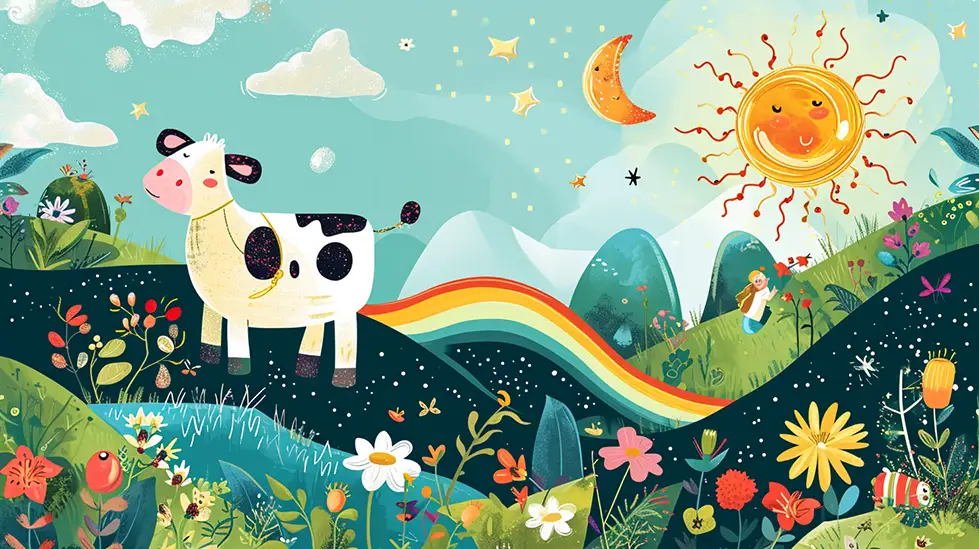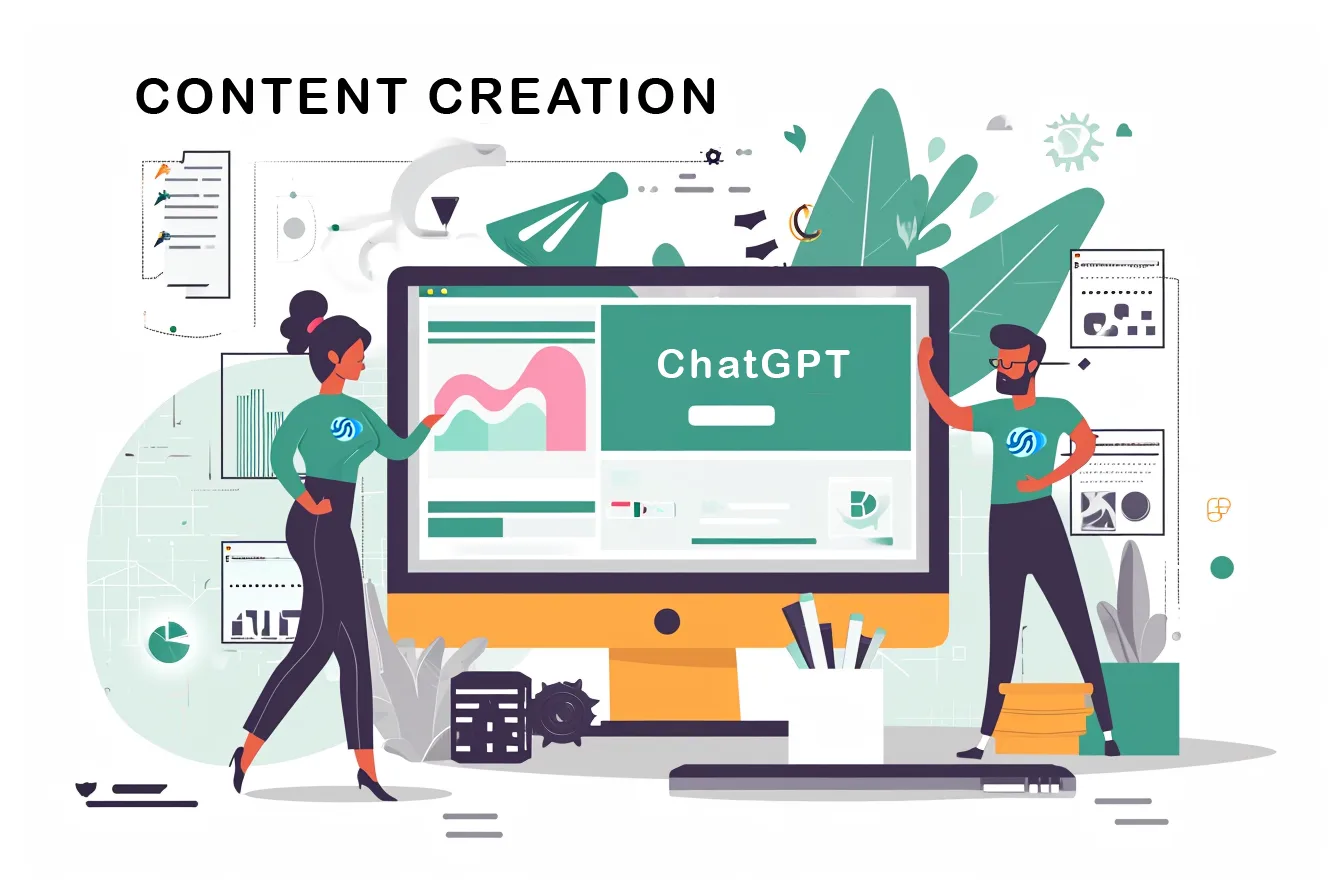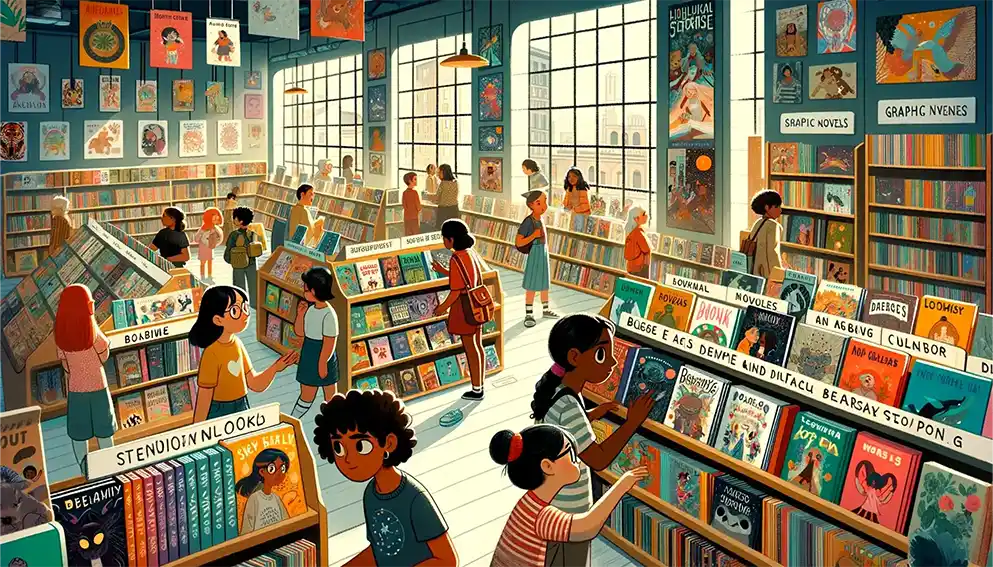Key Takeaways
| Importance of Age-Appropriate Books | Emphasizing the need for books that match a child’s developmental stage. |
| Early Literacy Development | Highlighting the benefits and ways to foster early reading habits. |
| Interactive Learning Books | Exploring the impact of engaging and dynamic book formats. |
| STEM and Language Arts Focus | The significance of incorporating STEM and language arts in children’s books. |
| Cultural Diversity in Reading | The role of books in teaching empathy and understanding through diverse stories. |
| Digital vs. Physical Books | Weighing the pros and cons of each format and how to choose between them. |
| Moral Lessons through Storytelling | The power of books in imparting moral and ethical lessons. |
| Illustrations’ Impact | The importance of artwork in enhancing storytelling and reader engagement. |
| Guidelines for Educators | Tips for teachers on selecting appropriate and engaging books for their classrooms. |

Introduction
Educational children’s books play a pivotal role in the growth and development of young minds. These books are not just tools for reading; they are gateways to a world of imagination, knowledge, and understanding that help shape a child’s worldview. In this guide, we’ll explore various aspects of educational books tailored for children, including recommendations based on age, focus on specific subjects such as math and science, and guidance for parents and educators on choosing the right books.
Why are educational books important for children? They are instrumental in fostering early literacy, developing critical thinking skills, and nurturing a lifelong love for reading. From colorful picture books to interactive storybooks, these resources can significantly impact a child’s educational journey. So, let’s dive into the world of educational children’s books and discover how they can be a fundamental part of children’s learning and growth.

Understanding Age-Appropriate Books
Selecting Age-Appropriate Educational Books: It’s crucial to choose books that align with a child’s developmental stage. Age-appropriate books ensure that the content is both engaging and suitable, offering the right balance of challenge and comprehension.
| Age Group | Recommended Focus |
| 0-2 years | Sensory and Board Books |
| 3-5 years | Picture and Story Books |
| 6-8 years | Early Reader Books |
| 9-12 years | Chapter Books |
For infants and toddlers (0-2 years), sensory and board books with bright colors and textures are ideal. Preschoolers (3-5 years) benefit from picture books that combine stories with vivid illustrations, helping them to develop a love for reading. Early school-age children (6-8 years) can transition to early reader books that offer more complex stories and vocabulary. For older children (9-12 years), chapter books with engaging plots and character development are suitable, as they foster independent reading and critical thinking.

The Impact of Early Literacy Development
Early Literacy and Its Long-Term Benefits: The foundation of a child’s education is significantly influenced by early literacy experiences. Exposure to books from a young age not only enhances reading and language skills but also stimulates cognitive development and creativity.
Key Factors in Early Literacy:
- Frequent Reading: Regular reading routines can significantly enhance language acquisition and comprehension skills.
- Variety of Books: Introducing children to a wide range of genres and topics broadens their understanding and interest.
- Interactive Reading: Engaging children through questions and discussions about the story enhances comprehension and critical thinking.
Tips for Fostering Early Reading Habits:
- Read Aloud: Make reading a shared, interactive experience.
- Create a Reading Space: Designate a cozy area specifically for reading.
- Lead by Example: Show your own interest in books and reading.
- Visit Libraries and Bookstores: Regular visits can help build excitement around books.

Interactive Learning Books: A New Trend
Engaging Young Minds with Interactive Books: Interactive learning books are revolutionizing the way children engage with reading. These books include features like pop-ups, pull-tabs, and tactile elements that make the reading experience more dynamic and engaging.
Benefits of Interactive Learning Books:
- Enhanced Engagement: Interactive elements keep children interested and involved in the story.
- Motor Skills Development: Activities like lifting flaps or pressing buttons help develop fine motor skills.
- Learning through Play: These books often incorporate educational elements in a playful, accessible manner.
Recommended Interactive Books for Children:
- “The Very Hungry Caterpillar” by Eric Carle: A classic book with interactive elements that teach counting and days of the week.
- “Tap the Magic Tree” by Christie Matheson: An interactive book that invites children to tap, rub, touch, and wiggle illustrations to make changes on the next page.
- “Press Here” by Hervé Tullet: This book encourages children to press dots, shake pages, and see what happens next, blending reading with play.

STEM Education through Books
Fostering Curiosity in Science, Technology, Engineering, and Math: Introducing children to STEM subjects through books is an excellent way to spark their curiosity and encourage analytical thinking. STEM-themed books often combine storytelling with educational content, making learning both fun and impactful.
Top Picks for STEM Books for Children:
- “Rosie Revere, Engineer” by Andrea Beaty: Inspires creativity and perseverance in solving problems.
- “Hello, World! Solar System” by Jill McDonald: A perfect introduction to the wonders of our solar system for young readers.
- “The Most Magnificent Thing” by Ashley Spires: A story about the trials and rewards of the creative process and perseverance.
Enhancing Language Skills through Reading: Language arts books for kids go beyond teaching basic reading skills; they immerse children in rich narratives, expand vocabulary, and improve comprehension. These books are fundamental in developing effective communication skills and fostering a love for language.
Top Language Arts Books for Kids:
- “Charlotte’s Web” by E.B. White: A classic tale that offers rich vocabulary and moral lessons.
- “The Gruffalo” by Julia Donaldson: A book that introduces rhythm and rhyme in storytelling.
- “Where the Sidewalk Ends” by Shel Silverstein: A collection of poems that play with language and imagination.

Embracing Cultural Diversity
Books as Windows to Different Cultures: Children’s books that focus on cultural diversity can teach empathy, respect, and understanding of different perspectives. These books often tell stories from various cultural backgrounds, providing a broader worldview for young readers.
Diverse Children’s Book Recommendations:
- “Last Stop on Market Street” by Matt de la Peña: A vibrant book showcasing the beauty of urban life and different cultures.
- “The Name Jar” by Yangsook Choi: A story about a Korean girl navigating cultural identity in a new school.
- “We Are Water Protectors” by Carole Lindstrom: Inspired by indigenous-led movements, this book teaches respect for the natural world and activism.

Guide for Parents: Supporting Your Child’s Reading Journey
Navigating the Path to Literacy with Your Child: As parents, playing an active role in your child’s reading journey is vital. It’s not just about choosing the right books but also about creating an environment that celebrates and encourages reading.
Practical Tips for Parents:
- Encourage Regular Reading: Set aside specific times for reading each day.
- Discuss the Stories: Talk about the books you read together to deepen understanding and engagement.
- Expand Beyond Books: Encourage reading in everyday life, like reading signs and menus.
- Be Patient and Supportive: Every child’s reading journey is unique. Celebrate progress, no matter how small.
Evaluating Children’s Books: What to Look For
- Educational Value: Does the book teach new concepts or ideas?
- Age-Appropriateness: Is the content suitable for your child’s age and development level?
- Engaging Content: Are the story and illustrations captivating and interesting?
- Diverse Perspectives: Does the book offer a variety of cultural or social viewpoints?

Digital vs. Physical Books: Understanding the Difference
Choosing Between eBooks and Traditional Books: In today’s digital age, the choice between eBooks and physical books is a common consideration for parents. Each format has its advantages and challenges.
Pros and Cons of Digital and Physical Books:
- eBooks: Convenient, portable, often interactive. However, screen time can be a concern.
- Physical Books: Tactile experience, no screen time. Requires physical storage space.
How to Choose the Right Format:
- Consider Your Child’s Preferences: Some children may prefer the tactile feel of physical books, while others might be more engaged with digital formats.
- Balance is Key: Incorporating both types of books can provide a well-rounded reading experience.

Storytelling with a Purpose: Moral and Ethical Lessons
Books as Mediums for Teaching Values: Storytelling in children’s books often goes beyond entertainment; it serves as a powerful tool for imparting moral and ethical lessons. These stories can subtly teach children about honesty, empathy, courage, and other important values.
Books That Teach Values and Ethics:
- “The Giving Tree” by Shel Silverstein: A tale about selflessness and love.
- “Aesop’s Fables”: Timeless stories that offer moral lessons through engaging narratives.
- “Wonder” by R.J. Palacio: A story teaching empathy and the importance of accepting differences.

Art in Reading: The Power of Illustrations
The Role of Illustrations in Engaging Young Readers: Illustrations in children’s books are not just decorative; they play a crucial role in storytelling, helping to convey emotions, settings, and characters. Well-crafted illustrations can significantly enhance a child’s reading experience, making books more memorable and engaging.
Examples of Beautifully Illustrated Educational Books:
- “The Snowy Day” by Ezra Jack Keats: Celebrated for its beautiful and pioneering use of collage.
- “Where the Wild Things Are” by Maurice Sendak: Iconic illustrations that bring the story to life.
- “Goodnight Moon” by Margaret Wise Brown: Classic illustrations that have charmed generations of readers.

For Educators: Selecting Books for the Classroom
Guidelines for Teachers in Choosing Books:
- Align with Educational Goals: Ensure that the books support the curriculum and learning objectives.
- Diverse and Inclusive: Include books that represent a wide range of cultures, experiences, and perspectives.
- Engaging and Age-Appropriate: Choose books that are suitable for the students’ age group and keep them engaged.
Classroom Book Recommendations:
- “The Day the Crayons Quit” by Drew Daywalt: Encourages creativity and perspective-taking.
- “Matilda” by Roald Dahl: Inspires a love for reading and learning.
- “The Lorax” by Dr. Seuss: Teaches about environmental responsibility in an accessible way.

Conclusion
As we conclude our journey through The Ultimate Guide to Educational Children’s Books, it’s clear that these books are more than just pages with words and pictures. They are tools that shape young minds, impart values, and ignite curiosity. Whether you are a parent seeking to nurture a love for reading in your child or an educator looking to enrich your classroom, the right books can make a profound difference.
Remember, the goal is not just to teach children how to read, but to instill in them a lifelong love for reading. By carefully selecting books that are age-appropriate, engaging, and educational, we can set the foundation for a brighter, more informed future. Let’s continue to celebrate the power of educational children’s books and the endless possibilities they bring to our children’s lives.
Key Takeaways
- The Importance of Age-Appropriate Books: Selecting the right books for a child’s developmental stage is crucial.
- Benefits of Early Literacy: Early exposure to reading enhances language skills and cognitive development.
- Interactive Books: These books engage children more actively and support learning through play.
- STEM and Language Arts: Books focusing on STEM and language arts are essential for a well-rounded education.
- Cultural Diversity: Books that showcase diverse cultures teach empathy and understanding.
- Digital vs. Physical Books: Both formats have unique benefits; the choice depends on the child’s preference and reading habits.
- Storytelling with a Purpose: Books can be powerful tools for teaching moral and ethical lessons.
- The Power of Illustrations: Illustrations play a crucial role in storytelling and engaging young readers.
- Guidance for Educators: Selecting the right books for the classroom should align with educational goals and promote diversity and engagement.
FAQ Section
Q: What age is best to start introducing educational books to children? A: It’s never too early to start! Even infants can benefit from the sensory experience of board books.
Q: How can I determine if a book is age-appropriate for my child? A: Look for age recommendations, consider your child’s reading level and interests, and choose books that match their developmental stage.
Q: Are digital books better than physical books for children? A: Both have their advantages. Digital books are convenient and often interactive, while physical books offer a tactile experience. Balancing both can be beneficial.

Ravjar Said is an engineer passionate about social impact. In his spare time, he runs Snowball AI – a YouTube channel exploring the intersections of artificial intelligence, education and creativity. Through innovative projects, he hopes to make AI more accessible and beneficial for all. Ravjar loves helping bring people and technology together for good.



